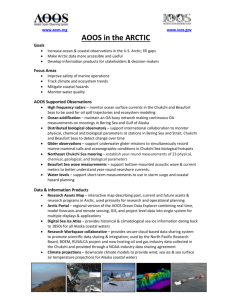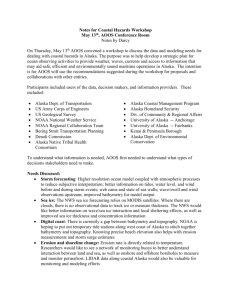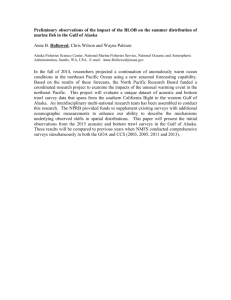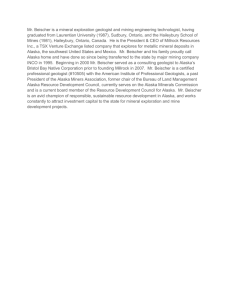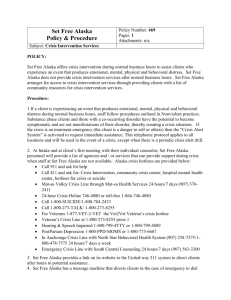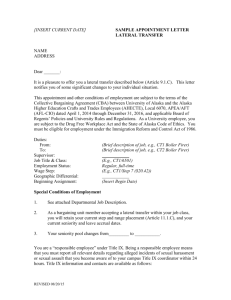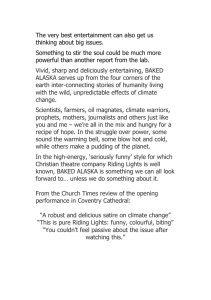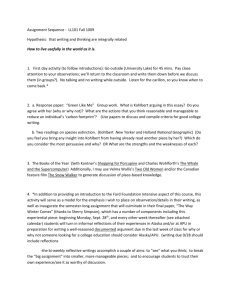Research and Collaboration Opportunities
advertisement
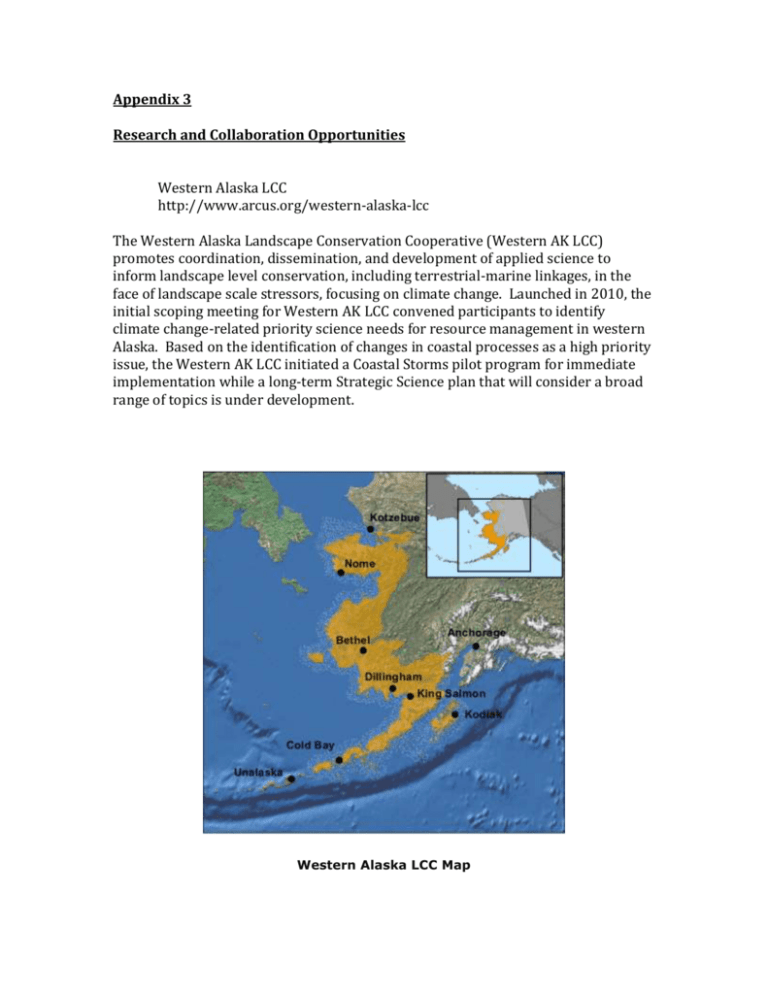
Appendix 3 Research and Collaboration Opportunities Western Alaska LCC http://www.arcus.org/western-alaska-lcc The Western Alaska Landscape Conservation Cooperative (Western AK LCC) promotes coordination, dissemination, and development of applied science to inform landscape level conservation, including terrestrial-marine linkages, in the face of landscape scale stressors, focusing on climate change. Launched in 2010, the initial scoping meeting for Western AK LCC convened participants to identify climate change-related priority science needs for resource management in western Alaska. Based on the identification of changes in coastal processes as a high priority issue, the Western AK LCC initiated a Coastal Storms pilot program for immediate implementation while a long-term Strategic Science plan that will consider a broad range of topics is under development. Western Alaska LCC Map Landscape Conservation Cooperatives are public-private partnerships that provide shared science to ensure the sustainability of land, water and cultural resources. Rapid climate change has wide ranging impacts, resulting in significant challenges to the overall goal of ensuring sustainability. As a collaborative approach, LCCs recognize that many challenges transcend political and jurisdictional boundaries and require a networked approach to conservation. USGS Alaska Climate Science Center http://www.doi.gov/csc/alaska/index.cfm Established in March 2010, the Alaska Climate Science Center (CSC) is one of eight proposed regional Climate Science Centers. Hosted by the University of Alaska, Fairbanks, the CSC has also developed strong partnerships with resource management agencies in order to facilitate development and delivery of science to address the highest priority climate change and adaptation needs identified by the Alaska community. Initial activities emphasize climate projection downscaling; integration of climate projections and ecological process and impact models; impact of glacier change on fish, wildlife and water resources; and, coastal processes and climate change impacts. Alaska Ocean Observing System http://www.aoos.org/ The Alaska Ocean Observing System (AOOS) is a component of a multi-scale system with two independent components, one for the global ocean and one for U.S. coastal waters and Great Lakes. The global component focuses on global climate change, natural hazards and marine services and is designed at a low resolution. The coastal components (AOOS is one of twelve regional associations in U.S. and territorial waters) is concerned with the impacts of climate change, natural hazards and human activities on the coastal zone. AOOS is organized as a non-profit and the Founding Board Members include Federal and State Agencies and numerous academic and research entities. Stakeholder concerns provide specific direction for AOOS, which identifies specific information and monitoring needs and develops information products to provide pertinent and accessible information back out to the user communities. Projects and programs that AOOS is involved in address marine operations (circulation and wind modeling, consolidated access to weather information), coastal hazards (sea ice atlas) and ecosystems, fisheries and climate trends (long-term data series, ocean acidification sensors). AOOS-STAMP http://www.aoos.org/stamp/ Spatial Tools for Arctic Mapping and Planning (STAMP) involves many partners and is funded by NOAA to develop data visualization tools for Alaska’s Arctic. The goal is to develop interactive data tools to support decision-making related to potential commercial fisheries activities in the Arctic. Such tools would be useful for evaluating a wide range of other activities as well, such as transportation routes and harbor development. The study area is the Northern Bering and Chukchi Seas. Anticipated products include an assessment of data and tools needed for planning and incorporation of existing data layers into the AOOS Arctic Ocean Portal. The project involves partnerships and collaboration with many entities and has an Advisory Committee that contains representatives from major stakeholders in the region. The partners and advisory committee will be assisted by a diverse team of collaborators who will help shape the tools through their guidance and contribution of data. The project began in January 2012 and is expected to continue until mid 2013. National Ocean Policy http://www.whitehouse.gov/administration/eop/oceans The President signed an Executive Order in July 2010 recognizing the importance and vulnerability of oceans, coasts and Great Lakes that adopts the recommendations of the Interagency Ocean Policy Task Force. The purpose of this national policy is to ensure the protection, maintenance and restoration of the health of these systems to enhance their overall values and functions. The Executive Order further established the National Ocean Council, which developed actions to address the policy in a National Ocean Policy Implementation Plan. A key objective is Changing Conditions in the Arctic, the only geographic based aspect of the plan. The Implementation Plan has been out for public comment and release of the final plan is expected soon. Specific Arctic aspects address the need to improve environmental response management, sea ice forecast, distributed biological observatory, enhanced communications, mapping and charting. The plan structure, with key milestones and identified responsible agencies is intended to provide a clear layout of anticipated accomplishments. Notably, the plan relies on existing agencies and authorities. Local Environmental Observer Network http://www.anthc.org/chs/ces/climate/leo/ The Local Environmental Observer (LEO) network in Alaska is community observer system hosted by the Center for Climate and Health within the Alaska Native Tribal Health Consortium. Observers on local community residents employed by the environmental, health, natural resource or community services field for federally recognized tribes and tribal organizations. Over sixty communities are represented. LEOs, described as providing the eyes, ears and voice of environmental change in Alaska, document unusual plants and wildlife, extreme weather or other events that can threaten food and water security or community health. Information is reported to the network host and posted on a map. Information sharing and display is designed to promote dialogue and provide information about unusual observations. It is also a way for interpretive information about the observations to be transmitted back to the communities. Other Collaboration Opportunities Workshop participants noted other collaboration opportunities, which included: North Slope Science Initiative – scenario planning for potential future development; includes and science and technical working group; Bilateral agreement with Russia relating to effects of high latitude – projects supported include as ecosystem observing site in Siberia and also sea ice modeling collaboration; National Park Service Beringia Program – partnership with Russia for cultural and natural resource work, based around development of an international park; and, Sea Grant – planned session on “Responses of Arctic Marine Ecosystems to Climate Change” as part of the 28th Lowell Wakefield Fisheries Symposium (March 2012).

